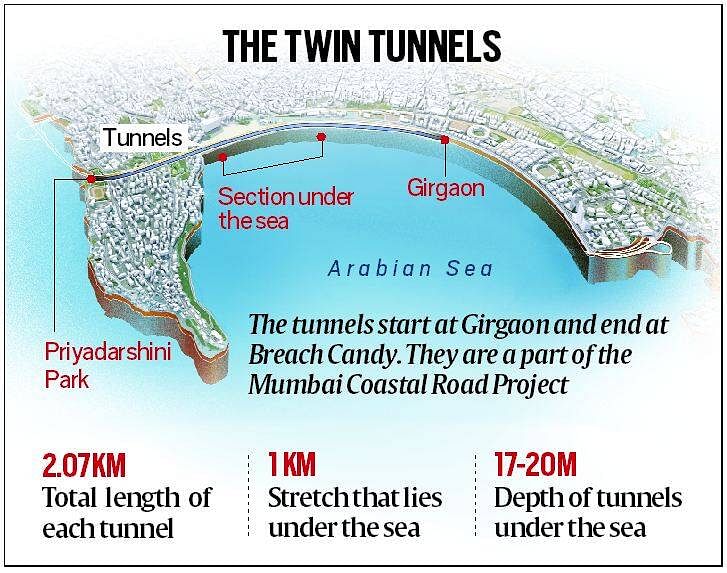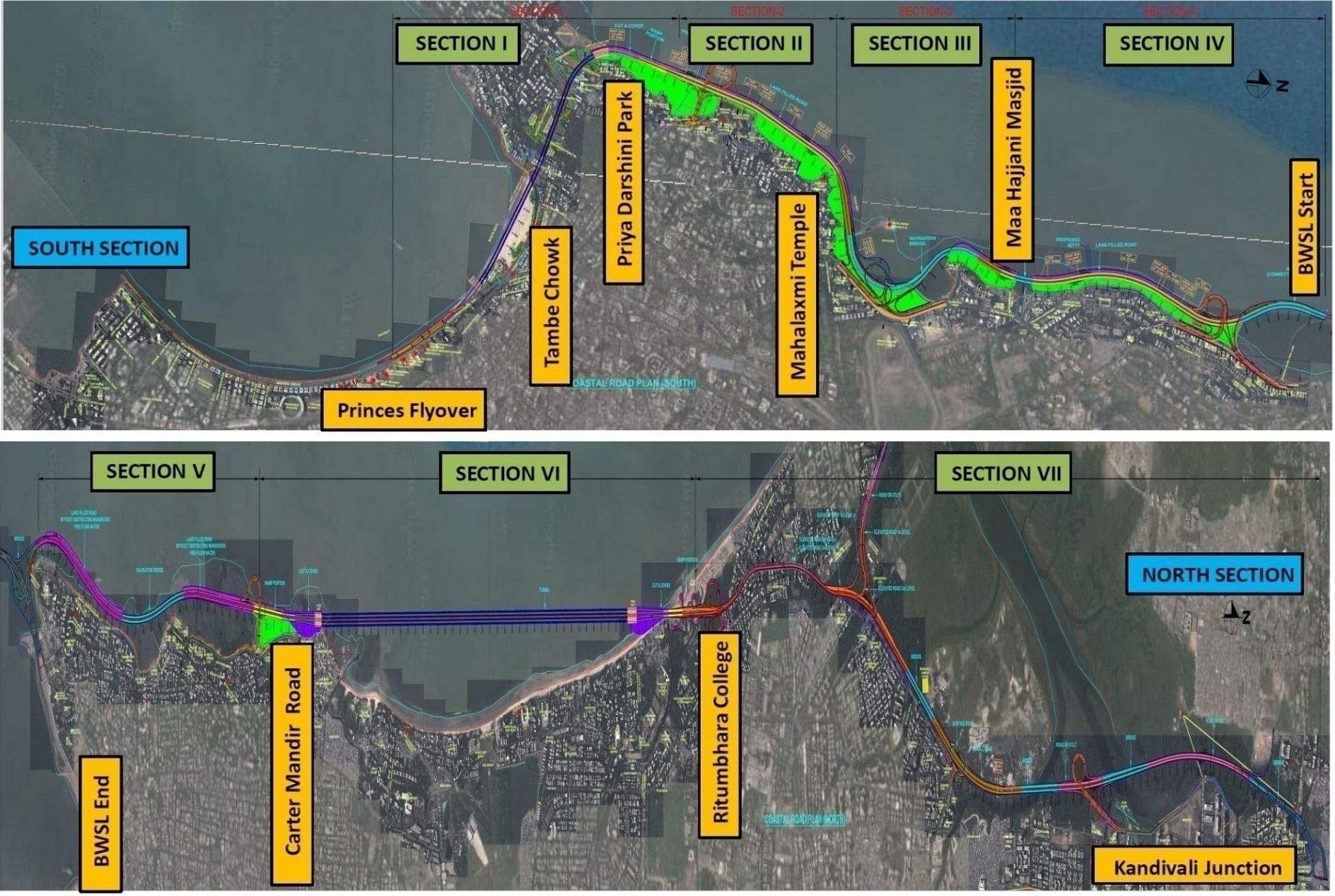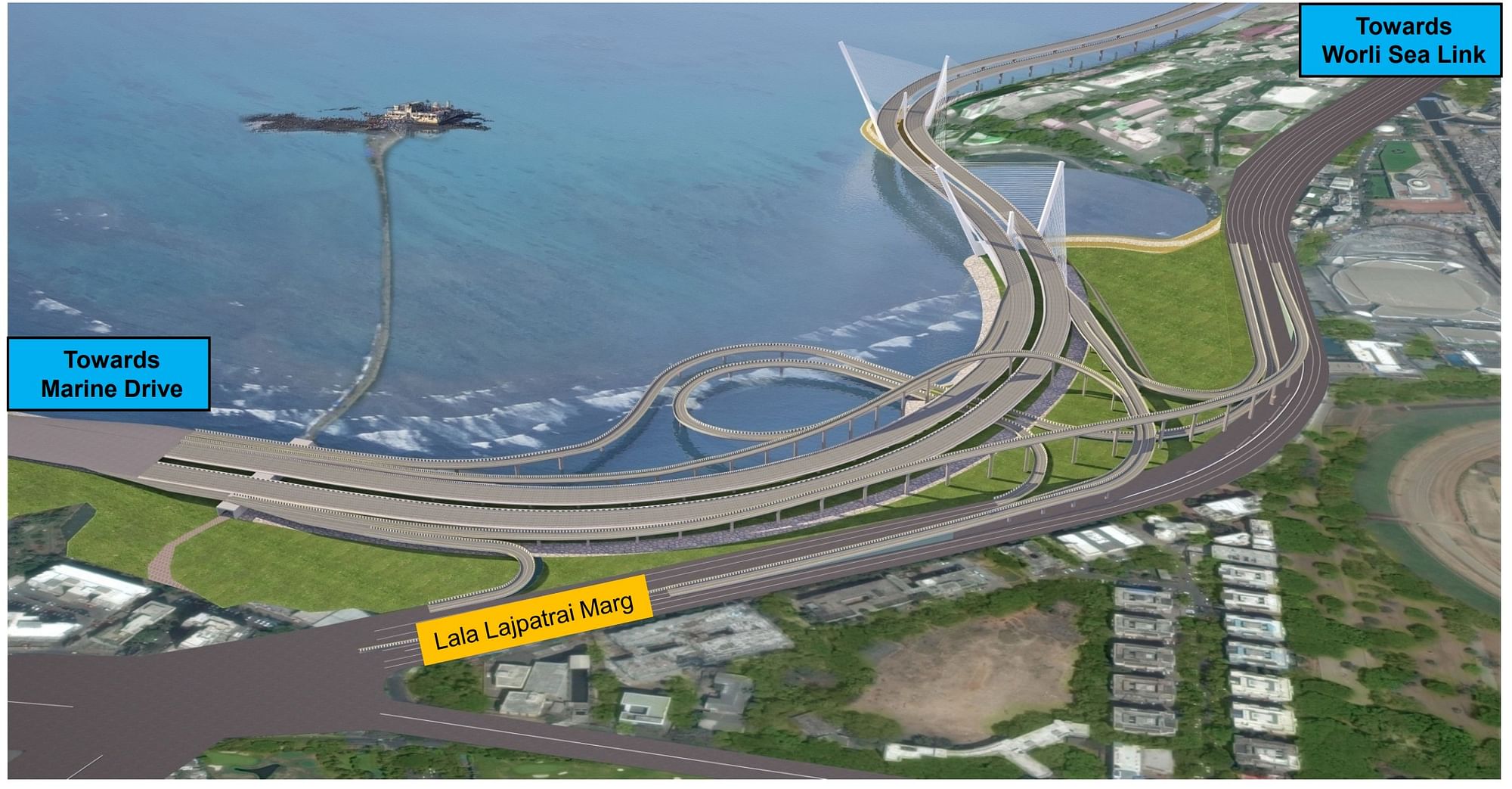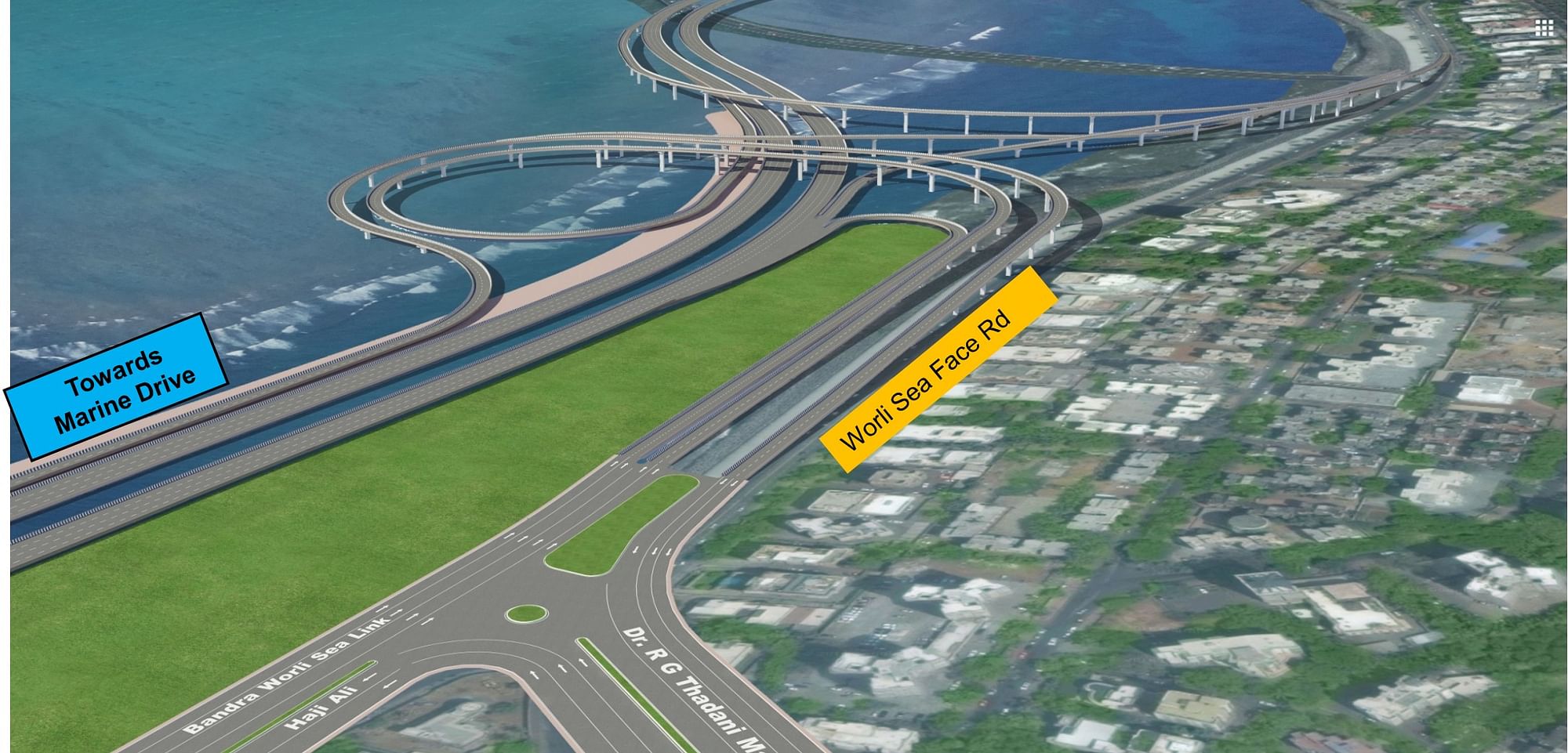The coastal road would cut noise and air pollution while reducing the journey time between Marine Lines in south Mumbai and Kandivli in north Mumbai by 70 per cent and fuel consumption by 34 per cent.
India’s first undersea twin tunnels in South Mumbai are almost finished and are all set to open by November.
It is part of the Rs 12,721 crore Mumbai Coastal Road Project (MCRP), which is nearing completion.
Starting near Girgaon and ending at Breach Candy’s Priyadarshini Park, the tunnels go under the Arabian Sea, Girgaon Chowpatty and Malabar Hill.
Constructed with a diameter of 12.19 metres and located 17-20 metres below sea level, the tunnels span almost one kilometre beneath the sea, reaching a maximum depth of 72 metres at Malabar Hill.
The tunnel entry and exit points will feature fibreglass facades in the shape of the iconic Marine Drive promenade, commonly called the “Queen’s Necklace.”
The Brihanmumbai Municipal Corporation (BMC) is responsible for building this project.
According to Ashwini Bhide, MD of Mumbai Metro Corporation, 93 per cent of the tunnel work is finished.
The tunnel will have two passages for motorists and four for pedestrians. It consists of three lanes, each measuring 3.2 metres.
According to Namkak Cho, a senior engineer, two lanes in each tunnel will be running while the third will be reserved for emergencies or in cases of high vehicular density.

Mumbai Coastal Road Project
The MCRP is a 10.58-km stretch connecting Marine Drive to the Bandra-Worli Sea Link and forms a part of the ambitious Coastal Road project. Its aim is to decrease the commute time from Girgaon to Worli from 45 minutes to 10 minutes during peak hours via the high-speed coastal road.
The project is to be constructed in two phases. The second phase involves connecting Bandra Sea Link to Kandivali Junction. Work on this stretch is yet to commence.


Once completed, the ambitious coastal road project (phase 1) will add an 8.5 km long and 20-metre-wide sea promenade to the city between Priyadarshini Park at Napean Sea Road and the Worli side of the Bandra Worli Sea Link.
While Larsen and Toubro is executing Package 1 and 4 of the coastal road at Rs 7,489 crore, a joint venture between Hindustan Construction Company (HCC) and Hyundai Development Company (45 per cent) is executing Package 2 and 3 at the cost of Rs 2,126 crore.
The coastal project is set to dramatically transform the coastline in South Mumbai, which has a long history of reclamation. Once complete, the road will extend the coast up to 100 metres inside the sea.
The coastal road has three interchanges: Haji Ali, Worli, and Amarson’s junction.


According to the MCRP chief engineer, Mantayya Swami, the coastal road would cut down noise and air pollution while reducing the journey time between Marine Lines in south Mumbai and Kandivli in north Mumbai by 70 per cent and fuel consumption by 34 per cent.
India’s Largest Tunnel-Boring Machine – Mavala
One of the key features of India’s latest project is the implementation of the largest tunnel-boring machine in the country’s history.
Dubbed “Mavala,” the TBM weighs over 1,700 tonnes and stands tall at nearly 12 metres, paying tribute to Shivaji’s renowned warfare experts. The boring process began in January 2021, but assembly and launch preparations started a year prior. Constructed by China Railway Construction Heavy Industry Company Ltd, Mavala comprises three distinct segments.
TBM Mavala completed the first tunnelling work on 11 January 2022. It began the excavation work for the second tunnel on 30 March. Mavala excavated around 600 metres of the second tunnel within three months.
Swami explained that the TBM has three primary sections: a cutter head with high-powered spokes, a seal that collects sediments and rocks, and a control room located in Mavala, where the operation is entirely managed.


